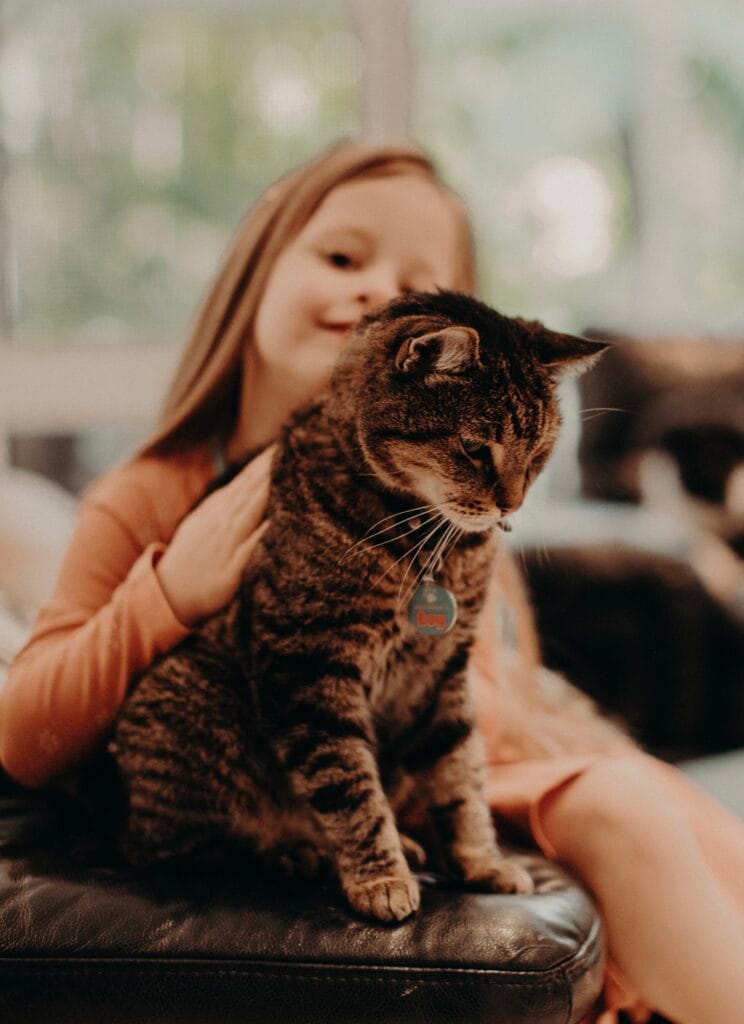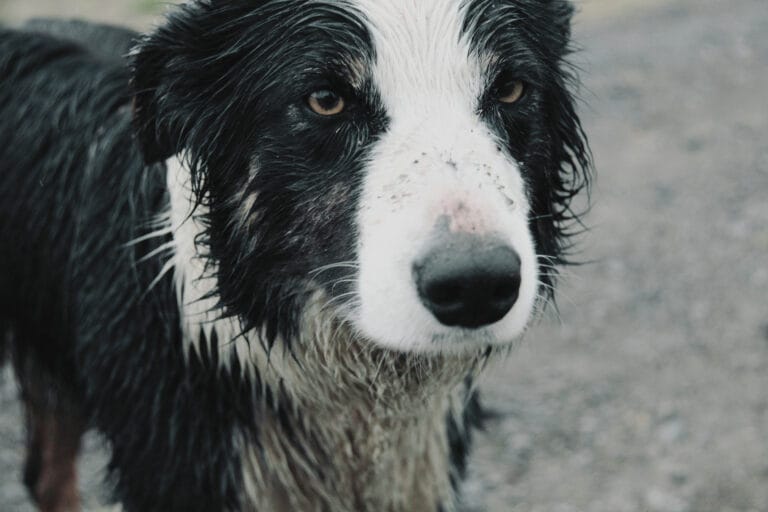

Estimated reading time: 9 minutes
Children who grow up understanding animals as sentient beings develop important life skills — such as empathy, responsibility, and respect. But the impact doesn’t stop there. Teaching children to care for animals also helps secure a better future for pets, wildlife, and the natural world.
With the help of Professor Vicki Hutton, a psychologist specialising in child development, and Suzanne Milthorpe, an animal welfare expert with World Animal Protection Australia, this post takes an in-depth look at the role animals have in developing a child’s empathy and social interactions.
Both women also share key advice for parents, carers, and educators on how to be positive role models by teaching kids’ kindness towards animals and responsible animal care, from a young age.
It’s important to highlight that, of course, not every child, family, or household is suited to caring for pets. So, this post is intended only for those who are responsible pet owners.
How learning empathy for animals shapes children — and protects animals
The heart of teaching children about animals begins with empathy. When kids learn that animals feel joy, fear, pain, and affection just like humans, they start to see them as sentient beings worthy of kindness and respect. This early understanding helps shape how they treat not only pets, but also wildlife and even the smallest creatures in their environment.
Children often learn best by watching the adults in their lives. If they see parents and caregivers treating animals with compassion—feeding a pet with patience, rescuing a bird from danger, or even gently moving a spider outdoors—they are likely to mirror those behaviours. These small, everyday actions send a powerful message: animals are not objects or background characters, but living beings who matter.
Hands-on experiences are another essential way to grow empathy. Visiting an animal shelter, a wildlife sanctuary, or even observing garden creatures can open a child’s eyes to the needs of animals and the role humans play in their care. These encounters move empathy from abstract ideas into lived experience.
Stories and media also play a huge role in shaping children’s attitudes. Choosing books, films, and shows that portray animals with respect and individuality helps children build emotional connections. When a child sees animals represented as characters with feelings, it reinforces the message that animals are friends, not tools or toys.
Finally, empathy extends beyond pets to the wild world. Teaching children to admire wild animals from a distance, respect habitats, and keep environments clean builds not just compassion, but also responsibility. Encouraging curiosity—answering their many questions about how animals live, feel, and survive—deepens this empathy and shows them that caring for animals is part of caring for our shared plane.
“By instilling kindness and empathy towards animals at a young age, we can shape a future where animals are treated with the respect and compassion they deserve.
Suzanne Milthorpe, WAPA
Practical tips for raising animal-friendly kids
✔️ Start with empathy: Teach children that animals have feelings and experience joy, fear, and pain just like people.
✔️ Be a role model: Show kindness in daily actions—whether feeding pets, helping injured wildlife, or relocating insects gently.
✔️ Offer hands-on learning: Involve kids in pet care or visit shelters, sanctuaries, and wildlife parks that prioritise animal welfare.
✔️ Use positive stories and media: Choose books, movies, and shows that respect animals and highlight compassion.
✔️ Discuss animal needs: Talk about what animals require to thrive—food, shelter, safety, and love.
✔️ Respect wildlife: Encourage kids to admire wild animals from a distance and never disturb habitats.
✔️ Practice gentle observation: Teach children to watch insects, birds, and small creatures without harming them.
✔️ Show a “do no harm” attitude: From ants to elephants, all creatures deserve to live safely in their natural environments.
✔️ Encourage curiosity: Answer children’s animal questions honestly and use them as teaching moments.
✔️ Promote responsible pet ownership: Involve kids in feeding, cleaning, and caring for family pets.
✔️Celebrate animals together: Take part in events like World Animal Day or create family traditions around animal kindness.
How teaching children about animals helps their development
There’s growing evidence supporting the positive – and significant – role animals can play on child development- with recent studies showing a strong impact on their social and emotional growth.
But experts say that the relationship between children and animals also helps instill essential life values.
And, raising children to be compassionate and respectful towards animals is a crucial aspect of nurturing responsible, empathetic individuals.
Suzanne Milthorpe, Head of Campaigns at World Animal Protection Australia, says teaching kids to be kind to animals early is an important took to create generational change in society’s approach to animal welfare.
“Teaching children about animal protection and welfare early on has the potential to create a lasting impact on how we view and approach animal welfare as a society.
“By instilling kindness and empathy towards animals at a young age, we can shape a future where animals are treated with the respect and compassion they deserve.
An example Suzanne uses is the millions of farmed and wild animals that are being used in industries such as intensive farming.
“Educating children about their welfare is critical in working towards a better world for them,” she says.
“It encourages children to be informed about their choices, and how these choices can impact animals and our environment.
“This means that young people today have the power to begin a journey of change that can eventually improve the lives of million animals,” she adds.
“Leading to a more compassionate and sustainable world.”
Milthorpe says there’s simple actions families can do to promote and encourage children to make animal-friendly choices.
Including making wildlife-friendly choices while travelling and shopping. Or learning about the challenges animals face by engaging in local wildlife protection initiatives.
These activities, Milthorpe adds, are vital in forming a child’s understanding of, and empathy for, animals.
“We see the younger generation as the driving force behind a more compassionate and responsible world.
“They’re not just the future; they’re the present, making a real difference today through awareness, and ethical consumer and lifestyle choices.
“We hope to continue to support and work alongside young change-makers, because together, we’re creating a future where animals are treated with the kindness and respect they deserve.”
Psychology of the child-animal bond
Professor Vicki Hutton says animals can also influence emotional growth, such as empathy.
While the ‘attachment theory’ traditionally began with the mother and child bond, Prof Hutton says it’s also been used psychologically in the human-animal relationship, including with children.
Attachment to an animal can play a critical role in a child’s psychosocial stages of development; this has been documented by historical psychological figures Erik Erikson and John Bowlby.
“For example, within the context of Erik Erikson’s stages of psychosocial development, attachment to an animal can contribute to areas such as purpose (ages three to five) and competency (ages five to 13).
“Looking at it in terms of Bowlby’s attachment theory, animals can provide children with unconditional love as well as a safe haven during times of stress or the unknown.
“The child can venture out into the world, knowing that their animal will always provide an anchor, or safe haven, when they return.
“Robert Weiss built on attachment theory when identifying six psychosocial needs,” she adds.
“Weiss listed attachment, social integration, nurturance, reassurance of worth, reliable alliance and guidance in stressful situations.
“All of which can occur when a child is attached to an animal.”
When are children ready for a pet?
Actually, the question should be are you ready for a pet?
Because children model their behaviour off adults, there are important considerations for families thinking about introducing an animal into their home.
“Children will learn from the way adults treat animals,” says Hutton.
“So, it is very important not to take on an animal if he or she is going to be emotionally or physically neglected or abandoned.
“That does not teach children responsibility and can have long term consequences for the animal and the child’s perceptions of the role of animals.”
“Animals are not commodities to be used for company or entertainment then put away until needed again.
“Cute puppies and kittens grow into unique individuals who deserve to have their needs met for the next 10, 15 or 20+ years.”
Hutton explains how behavioural issues such as separation anxiety, barking and anxiety-related aggression can all result in animals being relinquished when they grow out of the cute phase and assert their basic needs.
How to educate children about animals
Children’s books and television programs about animals can be more than just entertainment; they can be educational.
And while we don’t often think of documentaries as children’s viewing, they can, in fact, be incredibly impactful when it comes to issues about animals, nature, or the environment.
These programs, depicting animals with emotions and personalities, help children relate to them on a deeper level.
🚨It’s important to always choose media that portrays animals in a respectful and empathetic light, reinforcing the values you want to instill in children.
Suzanne says encouraging children to watch documentaries, or read a book about animals, is a great way to develop their understanding of different animal species’.
“These stories, which depict animals with emotions and personalities, help children relate to them on a deeper level,” explains Suzanne.
“Choosing media that portrays animals in a respectful and empathetic light can subtly reinforce the values of animal kindness.”
And, to actively engage children in animal welfare, World Animal Protection Australia provides free educational resources and activities.
Kids can access interactive animal books along with information on volunteering, and ways to get involved in campaigns, fundraising, and community events.


Final thoughts: shaping children’s growth and a kinder future for animals
By nurturing empathy and kindness toward animals, we’re not only helping children grow into emotionally intelligent individuals — we’re also shaping a more compassionate future for all living beings.
As parents, carers, and educators, we have a powerful opportunity to model respectful relationships with animals and teach responsible pet care.
Whether through storytelling, everyday choices, or real-world experiences, these early lessons lay the foundation for a generation that values animals, protects nature, and chooses kindness.
FAQ’s: children and animals
Animals support children’s social and emotional growth by teaching empathy, responsibility, and kindness. Interacting with pets can also improve communication skills and reduce stress.
Yes. Studies show that children who grow up with pets often experience reduced anxiety and greater emotional stability. Pets can provide comfort, companionship, and a sense of security.
There’s no universal age. Readiness depends on the child’s maturity and the family’s ability to provide consistent care. Parents should model responsible behaviour and ensure the child understands that animals are living beings, not toys.
Start with simple acts like gentle handling, feeding pets, or reading animal-themed books. Encouraging empathy, responsibility, and compassion at a young age helps children form positive lifelong attitudes toward animals.
Related posts
Animals and storms: how to help your anxious pet
With the torrential rain continuing across Sydney and parts of New South Wales, we’ve compiled an animal safety guide for…
Meet the dogs offering emotional support in courtrooms
Updated 13 July 2025 Three new court dogs have been officially “sworn in” to the National Court Dog Program, an…Animals and spirituality: 6 advocacy rituals for the October New Moon
Discover how to weave animal healing into your spiritual practices – ahead of the October New Moon, this post shares tips and soulful advocacy rituals to help combine your spiritual growth with compassion for all beings — creating ripples of healing, awareness, and kindness.
PayPal Melbourne Fashion Festival leads way in cruelty-free fashion
In a significant move for the fashion industry, the PayPal Melbourne Fashion Festival (PMFF) has announced a complete ban on…
World Animal Day 2025: 100 years of advocacy, and how to celebrate
World Animal Day 2025 is an extra special event — it marks the 100-year anniversary of this global movement for…





